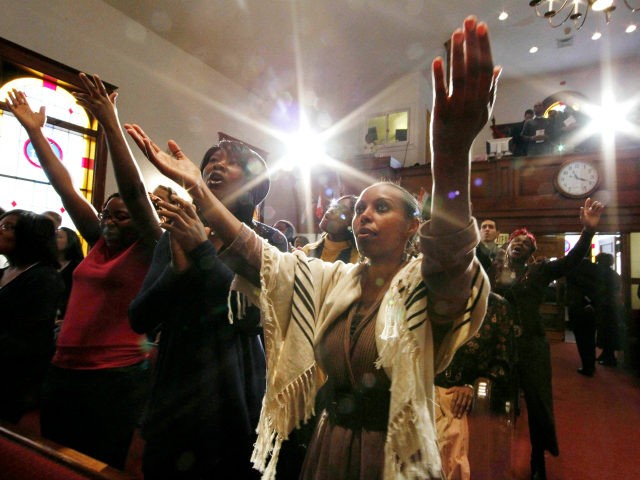Fears of Americans losing religion may be “overwrought,” declares an article in the Wall Street Journal Thursday, because evangelical churches are actually growing.
“A religious renewal could be on the horizon,” writes Ericka Andersen, even as many mainstream Christian churches are forced to downsize.
Ms. Andersen cites “underreported data” showing that as even as Methodist, Baptist, Episcopal, and Catholic churches in the United States have been losing members over time, nondenominational evangelical churches have experienced significant growth of more than 55 percent, up from 54,000 in 1998 to 84,000 in 2012.
A 2018 report by scholars from Harvard and Indiana Universities would seem to back up Ms. Andersen’s thesis, showing that religion in America was not following the pattern of many other advanced industrialized societies but was growing ever more exceptional in comparison with the rest of the world.
“The secularization thesis asserts that as a result of ongoing modernization and the advance of science, religion will become increasingly irrelevant in public and private life,” researchers Landon Schnabel and Sean Bock declared. While this seems to be the case in several industrial societies, it does not aptly describe the trends in the United States.
Rather than symmetric decline across all levels of religiosity, they asserted that “religious change in the United States could be driven by a decline of moderate religion.”
Data suggests that “intense religionists will increasingly define religion in the United States and that this religious makeup is — and will continue to be — unique compared to other wealthy, secularizing countries,” they said.
The team found that “the rise of the unaffiliated is due solely to a dramatic decline of the moderately religious.” Because strong affiliation remains stable while weaker affiliations have declined, “those with a strong affiliation actually make up a larger share of the affiliated population over time,” they wrote.
Similarly, a study that the Pew Research Center published in October 2019 found that over the last decade the percentage of Protestants describing themselves as evangelical or “born again” has risen from 53 percent in 2009 to 56 percent in 2019.
Despite the touted rise of the “nones,” Andersen wrote, “evangelical Protestants and Muslims are increasing in number” and Christian and Muslim birthrates “outpace those of the nones.”
It is important to realize that “religion in the U.S. is far from dead,” Andersen stated. “A selection of churches may be dying, but their replacements are alive, well and regenerating in ways the American church has never seen before.”

COMMENTS
Please let us know if you're having issues with commenting.